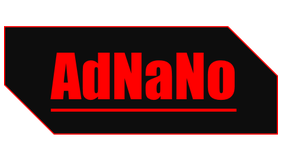
Adnano-tek中国区联系方式 于淼 :152 2727 0411 yumiao@adnano-tek.com

我们的MBE-10可以成长四寸~六寸的样品,样品温度可以加到900摄氏度,如果是两寸以下的样品可以到1100摄氏度。可以装置10个束源炉,最大容量40cc。配备晶振、束流监控器、高能电子枪以及监控软件。可以装置固体源、气体源/ ALD阀、等离子增强型束源炉(plasma cell)及我们特制的电子回旋共振束源炉(ECR plasma cell)。可装电子枪E-beam。
我们的腔体是用SUS316不锈钢制作,真空可到2×10-10torr,使用泵有浦发700分子泵与冷泵。内部有全罩式液态氮冷罩,可提供非常大的抽气效率。我们的设备在长二维材料以及拓扑材料、氧化物方面都有不错的性能。如:III-V 族, II-VI 族, Si/SiGe ,金属与金属氧化物(因为我们有独步全球的激光加热器,可到2英寸),以及GaN, AlN, AlGaN, InGaN, AlGaInN,CIGS,OLED 等。
UHV Molecular Beam Epitaxy (MBE - 10)
In addition, precise control and high stability is achieved by making the process automated with the use of the FBBEAR control software. The FBBEAR control software, provides complete data logging, precise parameter tuning which allows user to have easy operation and reliable experimental repeatability.
MBE can be applied for thin layer deposition of materials like: III-V semiconductors, II-VI semiconductors, Si/SiGe heterostructures, metals, metal oxides, metal nitrides (GaN, AlN, AlGaN, InGaN, AlGaInN, etc.), magnetic materials, topological insulators (e.g. Bi2Se3), 2D nanomaterials, nanowire materials, solar cell materials (CIGS), organic materials (OLED and organic solar cells), etc.
MAIN SPECIFICATIONS:
- Cylindrical SS316L electro-polished chamber with Liquid N2 Cryopanel
- ~2E-10 Torr Base Pressure
- UHV pumps and gauges
- 3-in substrate size
- 4-axes sample manipulator (XYZ, and Rotation)
- SiC heating element with sample heating temperature: 900°C
- 2-12 slots for effusion cells, gas source, vavle crackers, and/or plasma source
- Standard RHEED system (real-time epitaxy monitoring)
- Beam flux monitor
- Mask system with z-motion
- Pressure control system: upstream and downstream
- FBBeam System Control Software
ADVANTAGES OF MOLECULAR BEAM EPITAXY
- Clean substrate surfaces, and oxide-free layer
- Epitaxial (atomic layer) deposition
- Excellent uniformity and purity of deposited thin film
- In-situ deposition of metal seeds, semiconductor materials, and dopants
- Precisely controllable thermal evaporation
- In-situ coating monitoring by RHEED system
- Ultrasharp XRD profile for deposited thin-films
AdNaNotek’s liquid nitrogen cryopanel can provide extremely large pumping speed by condensing gases, particularly water and heavy hydrocarbons, unto the surface of the cryopanel. Furthermore, it can thermally isolate each effusion cells, and maintain the heat localized in each one of them.
The fully covered cryopanel provide very large capacity for liquid nitrogen (more than 20000 mL).

Y. Tung, Y. F. Chiang, C. W. Chong, Z. X. Deng, Y. C. Chen, J. C. A. Huang, C.-M. Cheng, T.-W. Pi, K.-D. Tsuei, Z. Li, H. Qiu “Growth and characterization of molecular beam epitaxy-grown Bi2Te3-xSex topological insulator alloys” J. Appl. Phys. 119, 055303 (2016) (SCI).
Shun-Yu Huang, Cheong-Wei Chong, Yi Tung, Tzu-Chin Chen, Ki-Chi Wu, Min-Kai Lee, Jung-Chun-Andrew Huang, Z. Li “Proximity Effect induced transport Properties between MBE grown (Bi1−xSbx)2Se3 Topological Insulators and Magnetic Insulator CoFe2O4.” Sci Rep. 7: 2422 (2017).
Shu Hsuan Su, Pei Yu Chuang, Sheng Wen Chen, Hsin Yu Chen, Yi Tung, Wei-Chuan Chen, Chia-Hsin Wang, Yaw-Wen Yang, Jung Chun Andrew Huang, Tay-Rong Chang, Hsin Lin, Horng-Tay Jeng, Cheng-Maw Cheng, Ku-Ding Tsuei, Hai Lin Su, Yu Cheng Wu “Selective Hydrogen Etching Leads to 2D Bi(111) Bilayers on Bi2Se3: Large Rashba Splitting in Topological Insulator Heterostructure” Chemistry of Materials 29, 8992-9000 (2017).
Chien-Ming Tu*, Yi-Cheng Chen, Ping Huang, Pei-Yu Chuang, Ming-Yu Lin, Cheng-Maw Cheng, Jiunn-Yuan Lin, Jenh-Yih Juang, Kaung-Hsiung Wu, Jung-Chun A. Huang*, Way-Faung Pong, Takayoshi Kobayashi, Chih-Wei Luo* “Helicity-dependent terahertz emission spectroscopy of topological insulator Sb2Te3 thin films” Phys. Rev. B 96, 195407 (2017).
Y. Tung, C. W. Chong*, C. W. Liao, C. H. Chang, S. Y. Huang, P. Y. Chuang, M. K. Lee, C. M. Cheng, Y. C. Li, C. P. Liu, J. C. A. Huang* “Tuning the transport and magnetism in a Cr–Bi2Se3 topological insulator by Sb doping” RSC Adv.7, 47789-47795 (2017).
Pei-Yu Chuang, Shu-Hsuan Su*, Cheong-Wei Chong, Yi-Fan Chen, Yu-Heng Chou, Jung-Chun-Andrew Huang*, Wei-Chuan Chen, Cheng-Maw Cheng*, Ku-Ding Tsuei, Chia-Hsin Wang, Yaw-Wen Yang, Yen-Fa Liao, Shih-Chang Weng, Jyh-Fu Lee, Yi-Kang Lan, Shen-Lin Chang, Chi-Hsuan Lee, Chih-Kai Yang, Hai-Lin Su, Yu-Cheng Wu “Anti-site defect effect on the electronic structure of a Bi2Te3 topological insulator” RSC Adv. 8, 423-428 (2018).
F.‐X. Liang, L. Liang, X.‐Y. Zhao, L.‐B. Luo, Y.‐H. Liu, X.‐W. Tong, Z.‐X. Zhang, J. C. Andrew Huang*, “A Sensitive Broadband (UV–vis–NIR) Perovskite Photodetector Using Topological Insulator as Electrodes.” Adv. Optical Mater. 7, 1801392 (2018).
Shu Hsuan Su, Pei-Yu Chuang, Jung-Chuan Lee, Cheong-Wei Chong, Ya Wen Li, Zong Mou Lin, Yi-Chun Chen, Cheng-Maw Cheng*, and Jung-Chun-Andrew Huang* “Spin-to-Charge Conversion Manipulated by Fine-Tuning the Fermi Level of Topological Insulator (Bi1–xSbx)2Te3.” ACS Appl. Electron. Mater. 2021, 3, 2988-2994.

